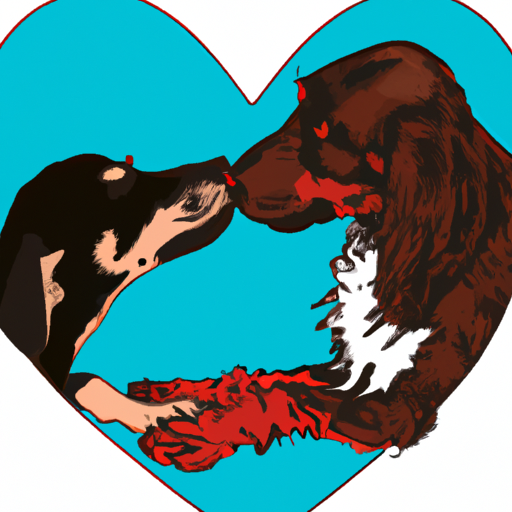There’s an old adage that dogs are man’s best friend. This is true, but dogs are also each other’s best friends. As pack animals, they have a complex and diverse range of social behaviors, including how they show affection to other dogs. This article will delve into these behaviors, backed by scientific research, to provide an in-depth understanding of how dogs show affection to other dogs.
Table of Contents
- Understanding Dog Behavior
- Types of Affectionate Behavior
- Body Language Signs of Affection
- How Puppies Show Affection
- How Adult Dogs Show Affection
- Frequently Asked Questions
Key Takeaways
- Dogs have a complex set of social behaviors that they use to communicate with each other.
- Affection is shown through a variety of physical and verbal cues.
- Puppies and adult dogs show affection differently.
- It’s important to understand these behaviors to better care for and interact with dogs.
Understanding Dog Behavior
To understand how dogs show affection, it’s important to first understand some basics about dog behavior. Dogs are social animals, and their behavior is heavily influenced by their pack mentality. This is something that has been inherited from their wolf ancestors and continues to play a significant part in how they interact with both humans and other dogs. You can learn more about this from a comprehensive study on dog behavior.
Types of Affectionate Behavior
Dogs show affection in a variety of ways. It’s not always as simple as a wagging tail or a friendly bark. Let’s delve into the most common types of affectionate behavior.
- Playful Behavior: This can include anything from a high-energy game of fetch to a gentle wrestling match. It’s often a sign of mutual affection and trust between dogs.
- Licking and Grooming: Dogs often groom each other as a sign of affection. This can include licking each other’s faces and bodies.
- Sharing Space: Dogs who enjoy each other’s company will often sleep, eat, and spend time together. This is a clear sign of mutual affection.
- Physical Touch: Dogs often lean on each other or sit close together as a sign of affection.
For more detailed insights, you might want to check out this informative article on how dogs communicate.
Body Language Signs of Affection
Knowing some of the key body language signs can help you understand when a dog is showing affection. Here’s a handy table detailing some of these signs:
| Body Language | Sign of Affection |
|---|---|
| Relaxed ears and tail | Yes |
| Leaning into the other dog | Yes |
| Play bow (front end down, rear end up) | Yes |
| Sharing toys or food | Yes |
| Prolonged eye contact | No |
| Rigid body | No |
How Puppies Show Affection
Puppies, like human babies, are still learning how to communicate and show affection. They often show affection through playful behavior, following others around, and seeking physical contact. On One Top Dog’s guide to puppy behavior, you can read more about how puppies interact with each other and their environment.
How Adult Dogs Show Affection
Adult dogs, having matured and learned the ropes of dog etiquette, show affection in slightly different ways. They might be more respectful of personal space, show affection through grooming, and use more subtle body language signs. You can learn more about this on One Top Dog’s guide to adult dog behavior.
Frequently Asked Questions
Q: Do dogs get jealous of each other?
A: Yes, dogs can exhibit signs of jealousy. If they feel that another dog is getting more attention or resources, they might act out.
Q: Can dogs have best friends?
A: Absolutely! Dogs can form strong bonds with other dogs and often have a ‘best friend’ that they prefer to spend time with.
Q: How can I tell if my dogs like each other?
A: Look for signs of mutual respect and affection. This can include sharing space, grooming each other, and playing together.
Understanding how dogs show affection to other dogs can enhance your relationship with them and improve their overall well-being. Take a look at One Top Dog’s guide to dog well-being for more tips and information.
In conclusion, observing and understanding the ways dogs show affection to each other can deepen our appreciation for these amazing creatures and help us better care for our furry friends.



